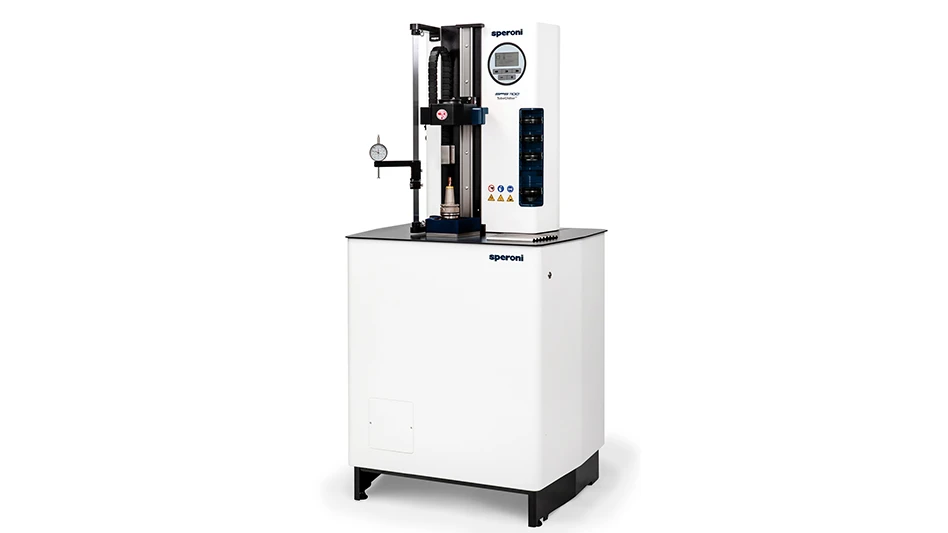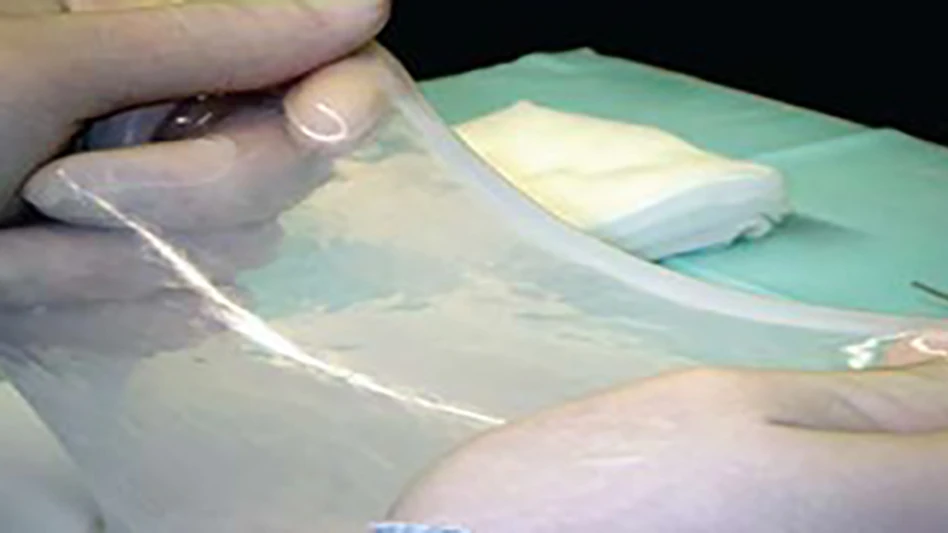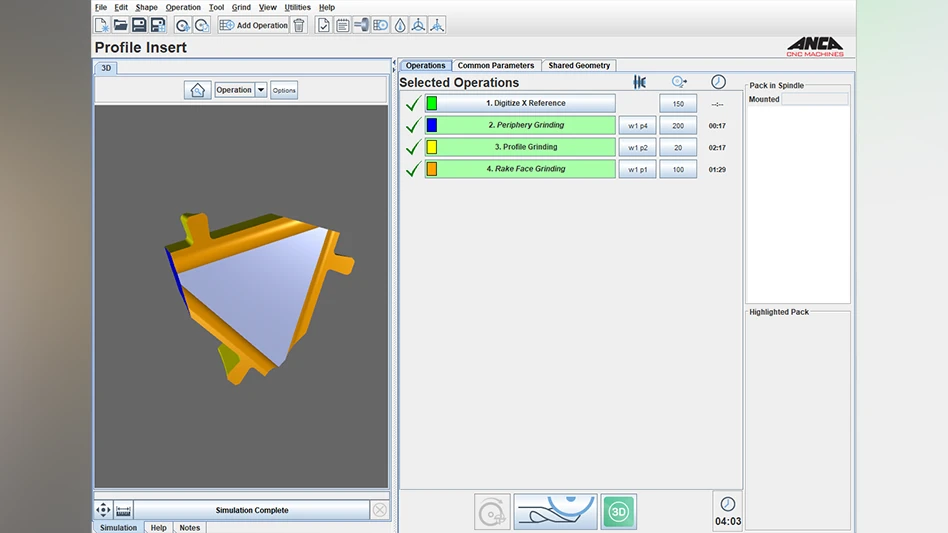Editor's Note: This article originally appeared in the May 2025 print edition of Today's Medical Developments under the headline “Precious metal fabrication.”

As a global leader in precious metals production with 100% integrated manufacturing capabilities, C.Hafner stays on the leading edge of technology to support the miniaturization trend in medical devices. The company has invested in micro-fabrication techniques including turning, milling, stamping, EDM, and laser marking, as well as additive manufacturing (AM) with a validated selective laser melting (SLM) process. When reviewing AM for medical devices, it’s important to define the specific AM process to be used because differences in materials and processes can have dramatically different considerations. In certain instances, the SLM option can provide benefits compared to conventional manufacturing.
A full complement of manufacturing processes starts with dedicated prototyping for fast product development, through commercial production. Metals include alloys of gold, silver, and five platinum-group metals (PGMs) – platinum, palladium, iridium, ruthenium, and rhodium, where Pt-Ir alloys are a major focus for medical devices.
Production starts with refining, followed by interim processes – casting, rolling, forming, powder, machining, 3D printing, stamping, and finishing – to final component fabrication. Deliverables include fine gold bars, custom fabricated components, and fine wires. All phases of production and quality are controlled in one facility for most applications. By efficiently managing chips and scraps from fabrication, costs are optimized compared to machining/stamping shops purchasing wire/sheet from a facility purchasing ingot from a refinery, which may be done by independent entities in the supply chain.
Applications include electrophysiology, neurostimulation, ablation instruments, and implanted impulse generators (IPG). Components include feedthrough pins, electrodes, marker bands/rings, catheter tips, and fine wires.
SLM for PGM and gold components is an optional process to make an interim workpiece, not the final component. The workpiece can then be drawn, formed, and/or machined into a final component. The decision to use conventional manufacturing or AM processes would be based on cost, design, and lead time considerations. Having both available provides the customer with the best solution for product development and manufacturing components. The following sections explore some factors to consider for the design of precious metal components.

Conventional workpiece production
In conventional processes, the refined metal alloy is poured from the melting crucible, cast into an ingot, and then cooled. Shrinkage porosity is common for Pt alloys during the cooling phase. Next, the cast ingot is hot and/or cold rolled to create workpieces with a more consistent grain microstructure than the as-cast ingot can provide. Rolling also mitigates shrinkage-induced porosity to a degree based on the level of metal manipulation. The casting and rolling steps aren’t performed with NC processes, which add inherent variability to the workpieces, but the impact of any inconsistency in bulk material variability is dependent on the final component requirements. For example, a poor grain microstructure can result in wire with a rough surface finish, which can affect brazing in feedthrough pins. With the miniaturization trend in medical device design, bulk material inconsistencies become more pronounced in the final component.
C.Hafner uses casting equipment with the highest process controls, ensuring repeatable as-cast quality. Decades of experience in processing semi-finished platinum products is the foundation for consistent and highest quality in the final product, despite some necessary manual operations.
Additive manufacturing workpiece production

In 2015, C.Hafner developed atomizing processes to produce precious metal micro-powders and subsequently developed SLM 3D printing and brazing materials with those powders. The inert-gas atomization processes are validated, repeatable, and robust, producing highly spherical particles and predictable particle size distribution. The atomized powder is sieved to a desired particle size distribution range. Dynamic image analysis (DIA) is used to characterize particle size and shape and can be further supported using in-house scanning electron microscopy (SEM) or energy- dispersive X-ray spectroscopy (EDX).
SLM was chosen as the AM process because of its benefits compared to other powder-based technologies such as binder jetting or metal injection molding which use carbon-based binder agents that need to be removed after printing. SLM has relatively fast cooling rates, which helps produce a superior microstructure. As an interim step toward producing a finished component, SLM can produce a workpiece with optimal dimensions for subsequent processing, such as for wire drawing or a near-net-shape part, where the final component is finished by CNC machining and may include surface treatments, such as polishing, grinding, and blasting.
SLM has virtually zero shrinkage porosity and equally fine microstructure, with no hot/cold rolling needed as for conventional casting processes. Together, the outcome can lead to improved mechanical properties. From a quality and process control standpoint, the key manufacturing steps for SLM, starting with powder atomization through printing, are done using NC processes. Lot control and quality monitoring parameters can be logged for traceability for powder production and SLM processes. SLM printed material meets or exceeds ASTM material property specifications.
Cooling of Pt-Ir alloys during casting causes shrinkage porosity as the material contracts, even when done under a vacuum. The porosity is usually irregular in shape and typically occurs in the center of a casting. With Pt-Ir alloys, maintaining bulk material consistency becomes more difficult as the Ir portion increases. With SLM, the heat mass of powder being melted at any point in time is significantly lower than in a casting process. The faster removal of heat with SLM produces finer and more consistent grain microstructures, with indiscernible levels of shrinkage porosity. Printing can be oriented to further optimize machinability and lower tool wear.
In an extreme example, SLM-produced Pt-Ir, 50-50 alloy, which has a melt temperature of 3,992°F, has been printed in commercial applications with a robust printing process for the most extremely demanding thermal and mechanical requirements. Similarly, for medical applications, SLM has potential benefits for Pt-Ir 80-20 alloys, in particular with eliminating porosity.
Since no casting is poured to produce the workpiece, the simpler SLM production flow allows for tighter process control. In many instances, depending on the alloy and exterior dimensions, SLM offers production flexibility and could reduce the lead time for prototypes.
FDA, regulatory considerations
Due to the vast array of end use possibilities for AM-fabricated medical device components, the FDA provided some guidelines in a Dec 5, 2017 report, Technical Considerations for Additive Manufactured Medical Devices. In general, a variety of processes and materials, from metals to plastics, have been used in AM for medical device components for nearly 10 years. Widespread adoption has not yet been realized. Limitations of AM are highly dependent on the specific type of AM process, material, end use validation requirements, safety, and cost. A major point to note is SLM only uses the elements in the defined alloy and they’re printed in an inert gas environment. AM processes using binders can add to biocompatibility issues and require a higher level of scrutiny and analysis of residual materials than just the properties of the desired material.
The FDA breaks down end uses into two categories: (1) implanted devices and (2) instruments facilitating a medical procedure. The medical device manufacturer must demonstrate the materials they plan to use in their device can be safely used in or on the human body.
For implanted devices, another consideration is MRI compatibility so the implant materials don’t cause safety issues with the patient, such as heating up or moving inside the patient during the MRI procedure. Pt alloys have essentially the same magnetic properties whether the workpiece is made with SLM or conventional methods, as the magnetic properties are driven by the elements in the Pt alloy and not nuances in grain microstructure.

Particle size distribution for Pt alloys, comparing Laval-nozzle atomization used by C.Hafner.
Definitions:
- Cumulated PSD: Sum of all particles up to certain particle size
- Frequencies PSD: Sum of particles within defined size-interval
- d50: particle size at 50% cum. PSD
Comparison:
- Free fall atomization: broad distribution + big particles
- Coaxial atomization: narrow distribution + medium sized particles
- Laval-nozzle atomization: very narrow distribution + fine particles + adjustable particle size distribution
C.Hafner specifications:
- Smallest d50 for Pt-alloys is 20µm (Ag: 10µm / Au: 15µm)
- Highest d50 is 40µm
- AM-Spec: d50 20µm to 25µm
The FDA’s AM guidelines in the 2017 report include, “…material control is an important aspect to ensure successful fabrication, and that final device performance is tied to the material, machine, and post-printing processes.” Material control for SLM includes powder production, as well as the printing process itself. As noted above, using AM to produce a workpiece is done under tighter NC operations than with conventional methods, where a casting is produced as a first step.
Biocompatibility of platinum, iridium, palladium, and gold is well established, based on a foundation of inertness, durability, electrical conductivity, and, for platinum alloys, radiopacity. Biocompatibility is, simply, how the human body may respond to the material planned to be used in a device. If a PGM or gold alloy meets ASTM specifications, the method of producing a workpiece would not affect interaction with body tissues or fluids.
Final components fabrication
The configuration of the workpiece to be used for final fabrication, whether produced with conventional casting/rolling or powder/SLM processes, can be optimized for the fabrication stage. SLM offers a higher level of optimization for workpiece configuration that can translate into lower costs. Workpiece fabrication includes CNC machining, forming, stamping, or drawn wire/sheet. The final component tolerances and features are controlled by the fabrication process, regardless of what method is used to produce the workpiece.
C.Hafner GmbH & Co. KG
https://www.c-hafner.de/en/index.html

Explore the May 2025 Issue
Check out more from this issue and find your next story to read.
Latest from Today's Medical Developments
- Teleflex sells acute care and urology businesses for $2.03 billion
- HANNOVER MESSE: Where research and manufacturing meet
- What’s next for the design and manufacturing industry in 2026?
- Arcline to sell Medical Manufacturing Technologies to Perimeter Solutions
- Decline in German machine tool orders bottoming out
- Analysis, trends, and forecasts for the future of additive manufacturing
- BlueForge Alliance Webinar Series Part III: Integrate Nationally, Catalyze Locally
- Robot orders accelerate in Q3





